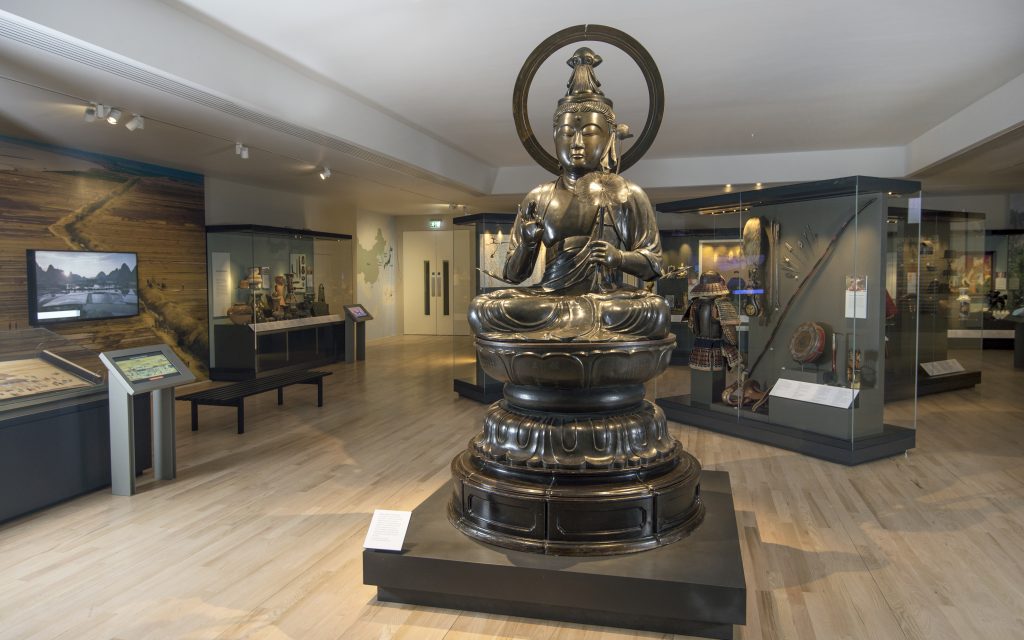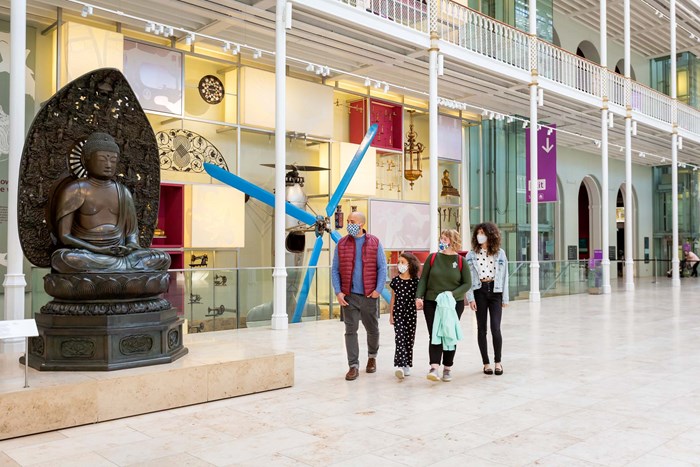At first sight, two of our large Buddhist sculptures appear to have similar stories. Dig a little deeper, and everything is not as it seems. Our Japan Foundation Assistant Curator Marjolein de Raat compares these statues as she explores their origins, the Victorian fascination with the ‘exotic’ and cultural appropriation.
The National Museum of Scotland has several large Buddhist sculptures on display. Join me as I delve into the background of two in particular: the statue of the Buddha Amida located in the Grand Gallery (A.1954.42), and the statue of the bodhisattva Sho-Kannon in the East Asia Gallery (A.1985.312).
Both statues come from Japan. Buddhism was introduced to Japan in the 6th century after having spread from India throughout East Asia. Nowadays, the religion is practised by many people worldwide. Buddhism is a living religion in Japan and the country has countless Buddhist temples that house statues very similar to the ones in our galleries. These statues are therefore not just historical objects, but also part of an active, living tradition. As you admire these two beautiful statues, you might be wondering: how did they end up in a museum in Scotland?
I’ve chosen these two statues because they are very similar in some ways, but quite different in others. Their stories after arriving in the UK are comparable but, although they were both made in Japan, their origins are almost opposite.
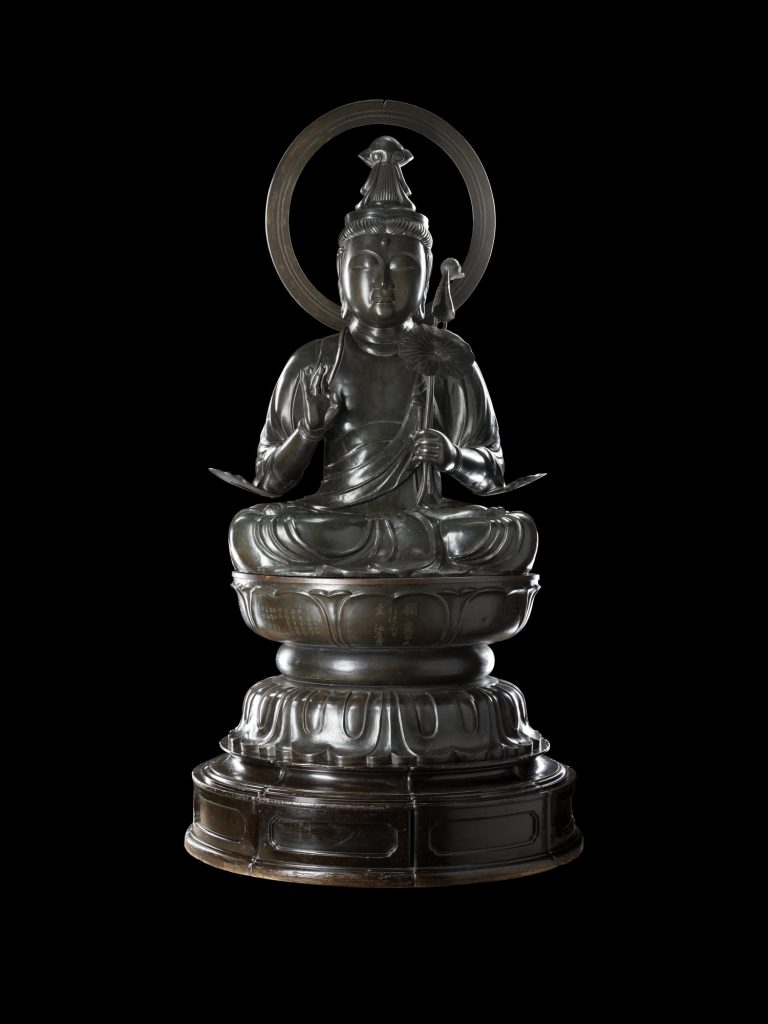
Both the Amida Buddha statue and the Sho-Kannon statue arrived in the United Kingdom at the turn of the 20th century. At that time, Europe and North America experienced a trend for Japanese objects known as Japonisme. This movement influenced art, design, and fashion, and Japanese objects were imported in large numbers to decorate the homes of those who could afford it.
Japan had been closed to large-scale international trade until a few decades earlier. After a civil war and revolution in 1868, shogun Tokugawa Yoshinobu, the military leader, was removed, restoring power to the emperor. Prior to this, Japanese goods had not been available to most Europeans. They were subsequently welcomed as an ‘exotic novelty’. Furthermore, Japan’s long period of isolation meant that it was seen as ‘pure’ and ‘untouched’ by some late Victorians. The country and its culture appealed to their romantic sensibilities as they were weary of what they saw as their own corrupted and polluted modernity.
Suddenly, objects that previously had a clear function and purpose in their original Japanese context were regarded instead as ‘art’ in the European sense: a thing of beauty that doesn’t necessarily have a practical use. The Buddha statues are one example of this change. Although of course beautifully made, they primarily had a religious purpose.
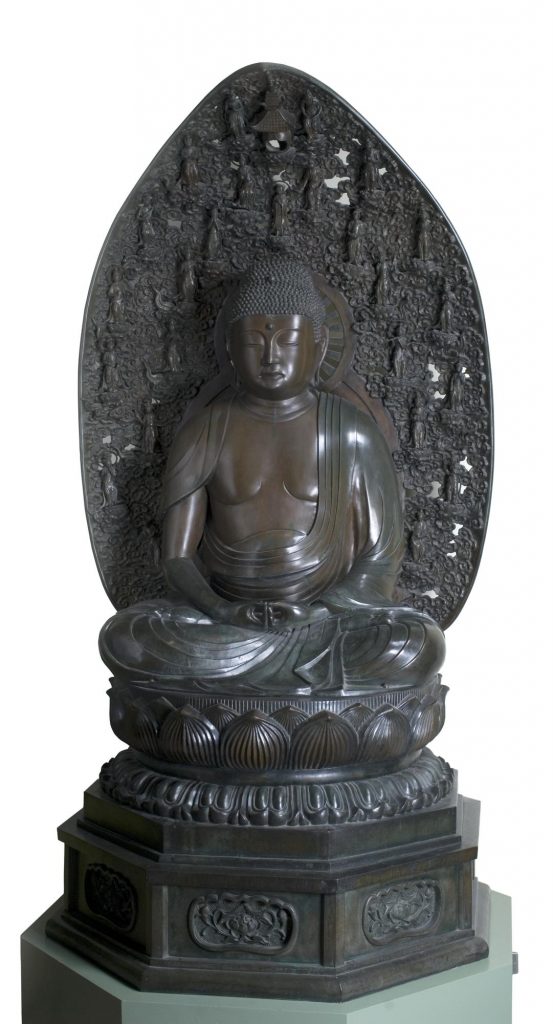
The new and unknown has always been fascinating to many people. Owning rare objects from faraway places was seen as a marker of wealth, status and an international sensibility in Victorian Britain. The display of Buddhist objects is still popular today among people who don’t necessarily practise the religion. How many people have a Buddha statue somewhere in their house or garden? However, this may be considered disrespectful by Buddhists or anyone who is a believer.
Cultural appropriation, in short, is when aspects of one culture are adopted by people from another, typically without permission, who use them outside their intended cultural context. There are many opinions on this and it can be hard to define what is considered problematic appropriation and what is more widely accepted as positive cultural exchange.
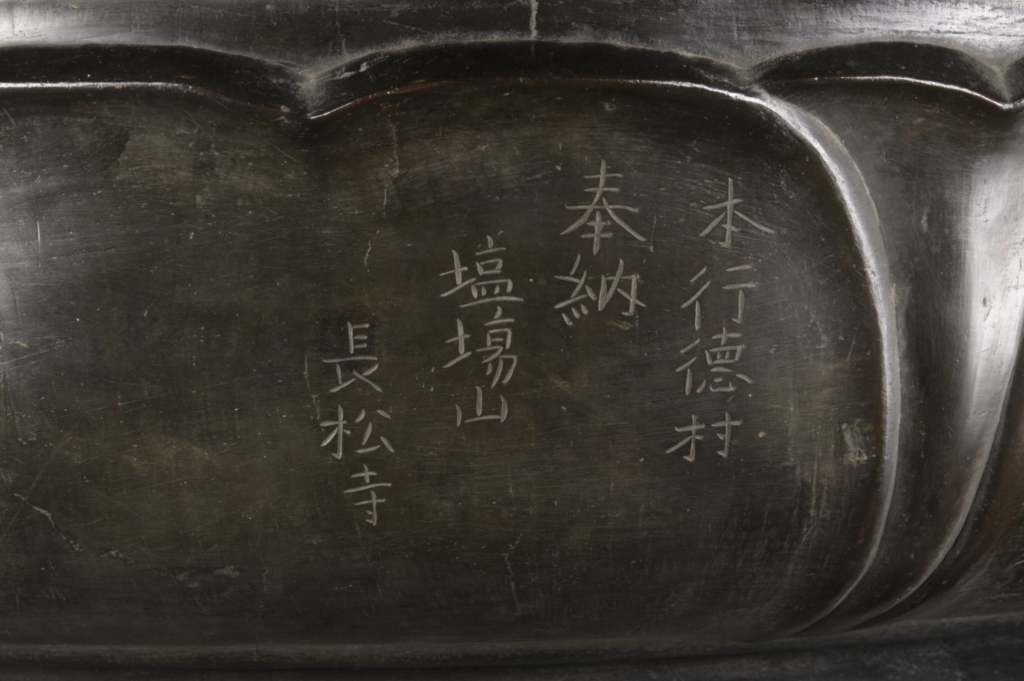
What can the statues themselves tell us about this? To find out, I studied their historical origin. This was a bit of a challenge while working from home. Luckily the origin of the Sho-Kannon statue is known, because it is inscribed on the statue itself! The lotus petals around the base of the statue name the donors, the maker and the temple to which it was donated.
It was made in 1787 for the Chōshōji Temple, close to present-day Tokyo. I have not yet been able to find out for how long it was used in a temple setting, but it was likely imported to the UK in the early 20th century by the London-based firm Liberty, a well-known dealer in Asian and Asian-inspired goods. It then stood in a house in Hampstead before it was sold in 1931 to Henry Wellcome, a pharmaceutical entrepreneur and collector. In 1985, National Museums Scotland acquired the statue when Wellcome‘s non-medical collection was dispersed after his death.
The Amida Buddha statue seems comparable. It was bought by Scottish merchant and landowner James Douglas Fletcher in 1902, possibly from a London-based retailer. It stood in the garden of his Rosehaugh estate near Avoch until 1954, when his widow died, and the statue was sold to National Museums Scotland.
The trajectories of the statues from their arrival in the UK around the turn of the century to their current place in the museum are very similar. When I delved deeper into the background of the Amida Buddha, I was surprised to find that it has a very different origin story.
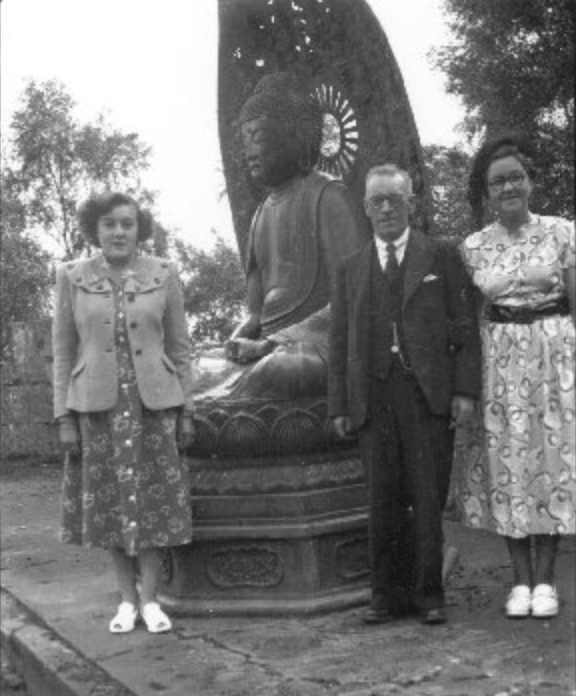
In 2013, Professor Kawai Matsumoto from Keio University, Japan, came to the museum and studied both statues. He noted that while the Sho-Kannon statue was made in a large-scale casting technique typically used for this kind of statue, the Amida Buddha statue was made in a different way. Instead, the method of construction suggested that it dates from the late 19th century, when Japan was already open for trade. Knowing that Fletcher bought it in 1903, this implies it was exported to Europe soon after its creation, suggesting it may have been made specifically for export. During this time, many other Japanese items, such as fans, kimono, and porcelain, were also created especially for the European market.
This casts a new light on the relationship between European traders and Japanese makers, suggesting the Japanese played an active role in the marketing and supply of Buddhist materials to Europe. This could change the statue’s role in the discussion of cultural appropriation. It shows that in this particular instance the cultural encounter was not a one-sided event in which the ‘appropriated’ side had their culture taken from them.
What does that mean for how we interpret these statues nowadays? If one sculpture was a ‘real’ religious (or consecrated) statue from a temple, is the other one ‘fake’? Can the Amida Buddha serve as a representation of Buddhism if it was never intended for religious use? And if the Sho-Kannon has been removed from its temple context, is that an erasure of its religious nature? The answers are not so simple.
Sometimes little offerings have been found near or on the Sho-Kannon statue which seems to indicate that, despite its current residence in the non-religious context of a museum, the statue still holds some spiritual meaning for certain people.
Another question is, what do these statues represent to the museum? Works of art, symbols of the Buddhist religion, or something else? Or can they represent all these things simultaneously?
I believe there is no one definitive answer for this. As the museum is in the process of re-evaluating how certain objects are presented, which stories get told and by whom, we are exploring and unpacking these complex histories. And for me, that makes these objects even more fascinating.
We are committed to revealing the full range of stories about our collections, aspects of which have been shaped by imperial and colonial thinking and actions that were based on racial and racist understandings of the world. Find out more.

